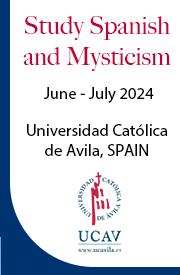A new DNA analysis gives tentative support to the belief that the remains in an ancient lead coffin are those of St. Luke, traditionally considered the author of the third Gospel and the Acts of the Apostles.
Dr. Guido Barbujani, a population geneticist at the University of Ferrara, Italy, has extracted DNA from a tooth in the coffin. He concluded that the DNA was characteristic of people living near the region of Antioch, on the eastern Mediterranean, where Luke is said to have been born. Radiocarbon dating of the tooth indicates that it belonged to someone who died between 72 A.D. and 416 A.D. . . .
The Evangelist, according to ancient sources, was a physician who was born in Antioch and died at 84 in about 150 A.D. in the Greek city of Thebes. The coffin with his remains was taken to Constantinople, the capitol of the Byzantine empire, in 338 A.D. and later moved to Padua, Italy. . . .
The coffin is known to have been in Padua at least since 1177 A.D. It was placed in a marble sarcophagus and kept in the Basilica of Santa Giustina. It was last opened in 1562 A.D. and seems to have been somewhat ignored until October 1992. At that time the bishop of Padua, Antonio Mattiazzo, received a letter from Hieronymos, the Orthodox Metropolitan of Thebes, asking that part of the relics to be donated to the site of Luke’s tomb in Thebes.
Bishop Mattiazzo, according to an article in November 2000 in Traces, a Catholic journal, decided to investigate the relics under the leadership of Dr. Vito Terribile Viel Marin, a pathologist at the University of Padua. In 1998 the 400-year-old seals were removed from the lead coffin, and the study began.
The dimensions of the coffin exactly fit the tomb in Thebes considered to be Luke’s. In the coffin was a skeleton, but not the skull. . . .
Since the present population of Antioch includes many Kurds, Dr. Barbujani sampled the DNA of Syrians from nearby Aleppo. In place of the inhabitants of ancient Constantinople, now Istanbul, he tested Greeks from Attica and Crete.
The DNA from the Padua tooth, a type inherited only through the mother’s line, turned out to resemble Syrian DNA more than Greek DNA.
“Our data tell us the body is absolutely compatible with a Syrian origin,” he said. “But I am aware of the limitations of the DNA data, and though a broad spectrum of ages is possible, the most likely is 300 A.D.” Hence both possibilities should remain open, he said.
The body, if indeed it is Luke’s, has experienced a simpler voyage through history than the head, which was removed by the Emperor Charles IV in 1354 and taken from Padua to Prague, where it rests in the Cathedral of St. Vitus, in the Prague Castle.
. . . Though many relics turn out to be forgeries, executed in modern or medieval times as demand arose, the Padua body seems more likely than most to be what it is claimed to be, although exact proof is lacking. – New York Times, October 16, 2001
















